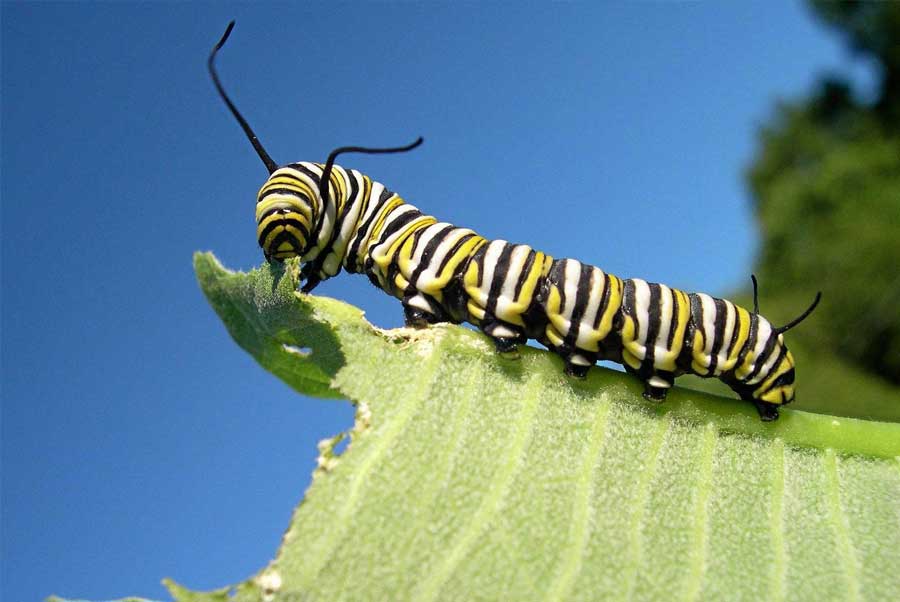With growing concern about traditional pest control methods, many gardeners and homeowners want to turn to safer, more eco-friendly methods to keep bugs under control. The question is, do organic pest control methods really work? In many cases, organic pest control methods can be even more effective than traditional pesticides.
Use Floating Row Covers
Floating row covers can be used to control aphids, tomato hornworms, cabbage moths and cabbage worms, potato beetles, squash bugs, and other mobile pests. Even better, they give some protection from deer, birds, rabbits, and squirrels, too. The critters don’t even realize they’re under there. The covers will give young plants protection from wind and sun, too. Floating row covers are one of the best ways to keep a large variety of pests away out of your vegetables and flowers. Use them to protect your plants temporarily when pests are most active and can do the most damage. For plants that don’t require insect pollination, they can be used for the entire lifespan of the crop.
This translucent polyester fabric comes in rolls that are 4 to 8 feet wide and it can be purchased by the roll or by the yard. Get the lightweight version for summer use. It will keep the bugs off your plants without overheating them. The heavyweight version is great to use as a season extender in early spring and late fall because it will help to warm the soil and give your plants some protection from light frosts. The material is porous to let in water and it will let in up to 80% of the natural light, too.
Floating row covers are extremely versatile. You can simply drape the material over your crops, or use it with hoops or wires. It can even be wrapped around your tomato cages to protect your precious tomato plants. The most important thing you need to remember is that the edges must be secured to keep pests from accessing your plants. Use boards, rocks, or landscaping staples to tightly secure the edges. For best results, install your row covers as soon as you put your plants in the ground and leave them in place for as long as possible.

Use Insecticidal Soap
Insecticidal soap can be a crop saver when you have a sudden infestation of soft-bodied insects like aphids, whiteflies, and spider mites. It works by using fatty acids to break down the protective cuticles of the insect so that it becomes dehydrated and dies. The soap must come in direct contact with the insect in order to do its job, so there is no residual effect with this method. You will need to treat your plants every 5 to 7 days, as new hatches occur.
When applying insecticidal soap, you will need to completely wet the leaves on both sides. Soaps can cause leaf burn, so be sure to test each type of plant carefully before applying it to your entire crop. The soaps are usually sold as a concentrate that you will need to dilute into a spray bottle. Once the insecticidal soap has been diluted it will only be effective for a few days, so you should only mix up one application at a time.
Use Neem Oil Spray to Prevent Pests
Neem oil can be used to manage squash bugs, potato beetles, bean beetles and other leaf-eating beetles. Neem oil contains several natural steroids. When it is applied to plants and sprayed on pests, the insects will lose interest in laying eggs. They will also eat less and grow more slowly.
For best results, begin applying Neem oil at the first sign of adult insects. Continue to reapply every 7 to 10 days for the entire growing season. Although egg-laying will be significantly reduced, you will still need to handpick adult insects and eggs regularly to keep them under control and minimize damage. It’s important to remember that Neem oil is not selective, so it will affect beneficial insects, too. Save your honeybees by covering your plants with a row cover for at least 24 hours after Neem oil has been applied. If possible, you should avoid spraying during peak flowering times and try not to spray the flowers. Spraying when bees are not as active, like early morning or late evening, is also a good idea.
Before applying, shake the product well. When mixing your Neem oil concentrate, use lukewarm water to get a better mix. Be sure to completely wet both sides of the leaves of affected plants. Don’t spray on very hot days and don’t spray on plants that are stressed from lack of water. To avoid burning your plants, test it on a few leaves and wait 48 hours before applying it to the entire plant.
Add Beneficial Nematodes to Your Soil
Beneficial, or parasitic, nematodes work by releasing a bacteria that kills the host insect in as little as 1 or 2 days. These nematodes exist in most soils in small numbers, but there usually aren’t enough of them to control large pest populations. Nematodes are very effective for controlling soil-dwelling pests like root maggots, cutworms, Japanese beetle larvae, and other grubs.
Parasitic nematodes are purchased by the billions and shipped while they are dormant. Store them in your refrigerator until you need them and then mix them with warm water when you’re ready to apply them to your garden. They do lose effectiveness over time so try to use them as soon as possible. Also, don’t try to save any of them after they’ve been mixed because they are only viable for a short time.
You should wait to apply nematodes to your soil until the soil has reached about 60 degrees. Wait until the evening, or apply them when it’s overcast and water them in thoroughly. The recommended rate of application for 1,000 square feet is approximately 23 million nematodes.
Whether you’re doing it yourself or hiring a professional pest control company, organic pest control is a very safe and effective option for keeping the bugs from taking over your home, lawn, and garden.













